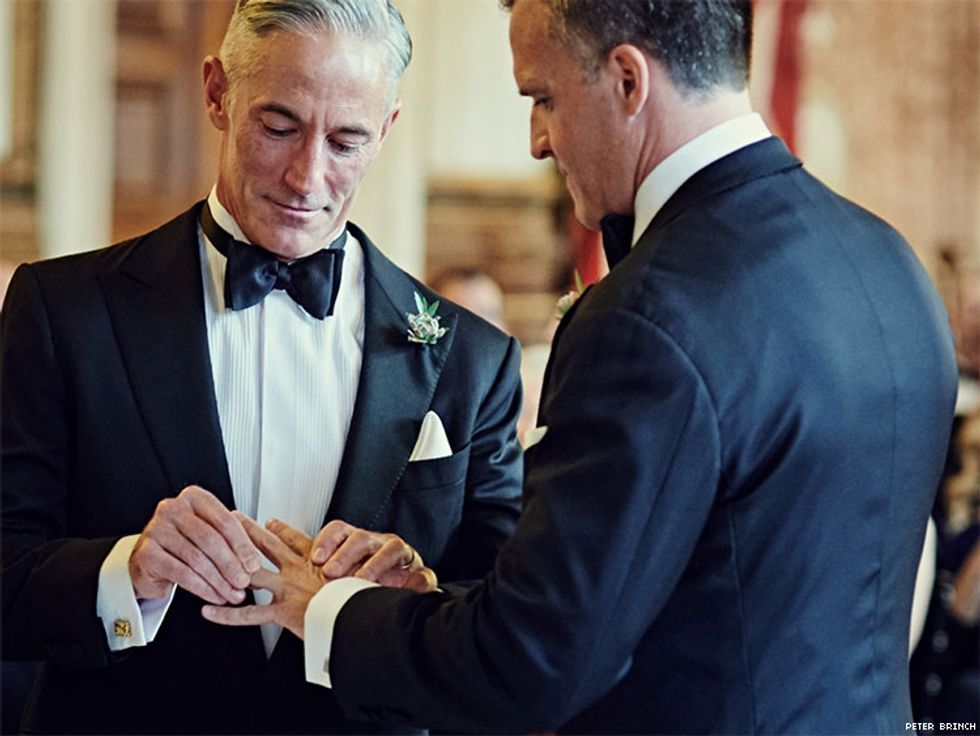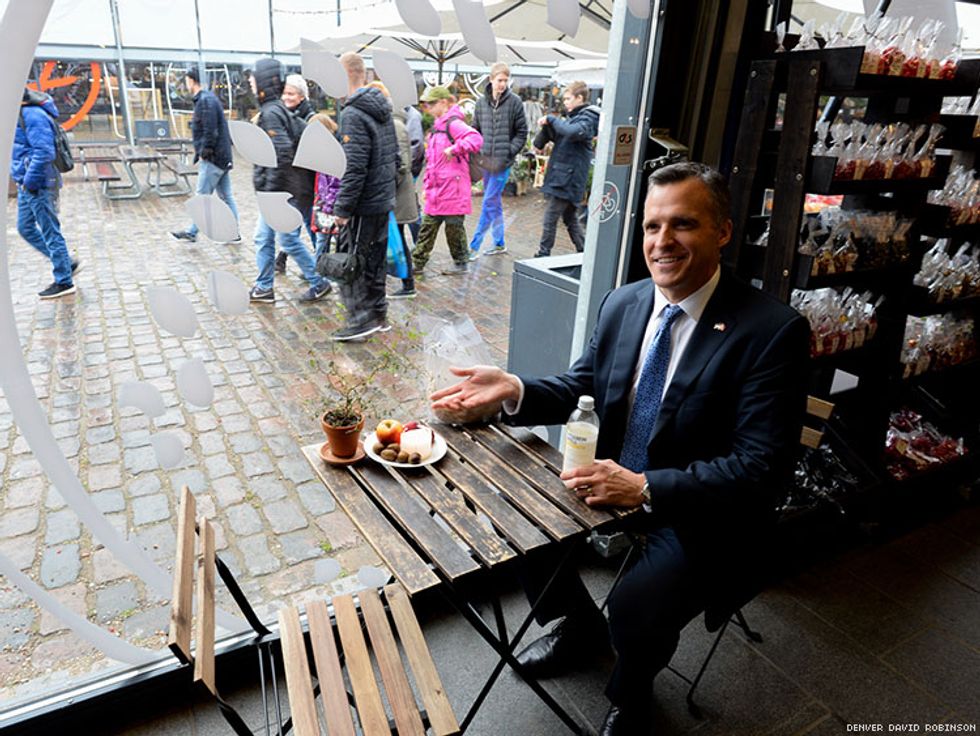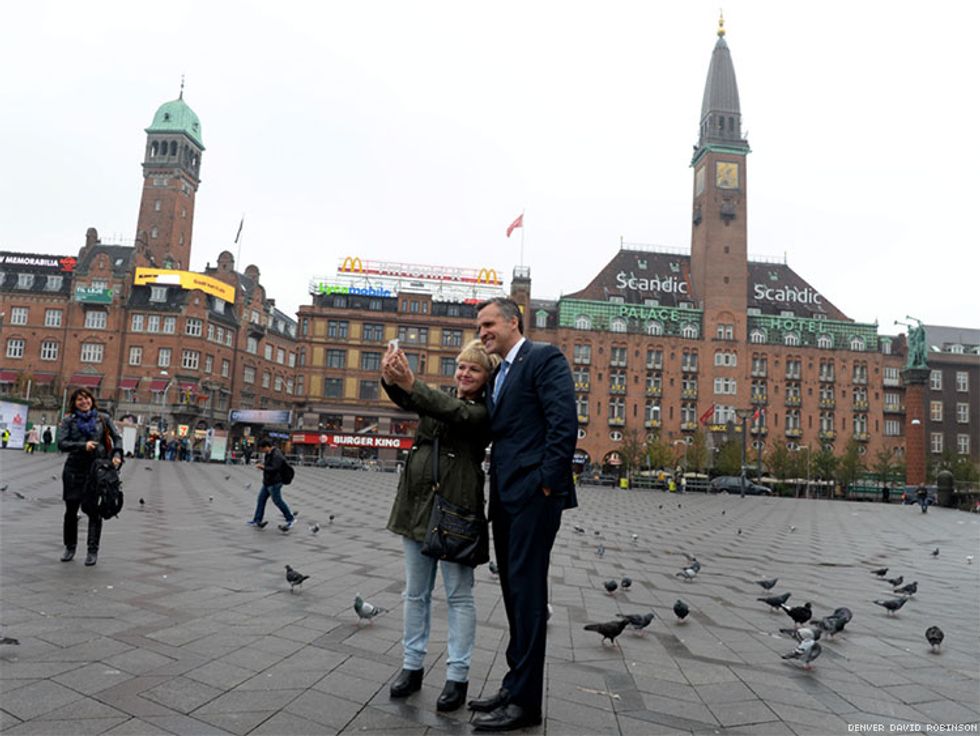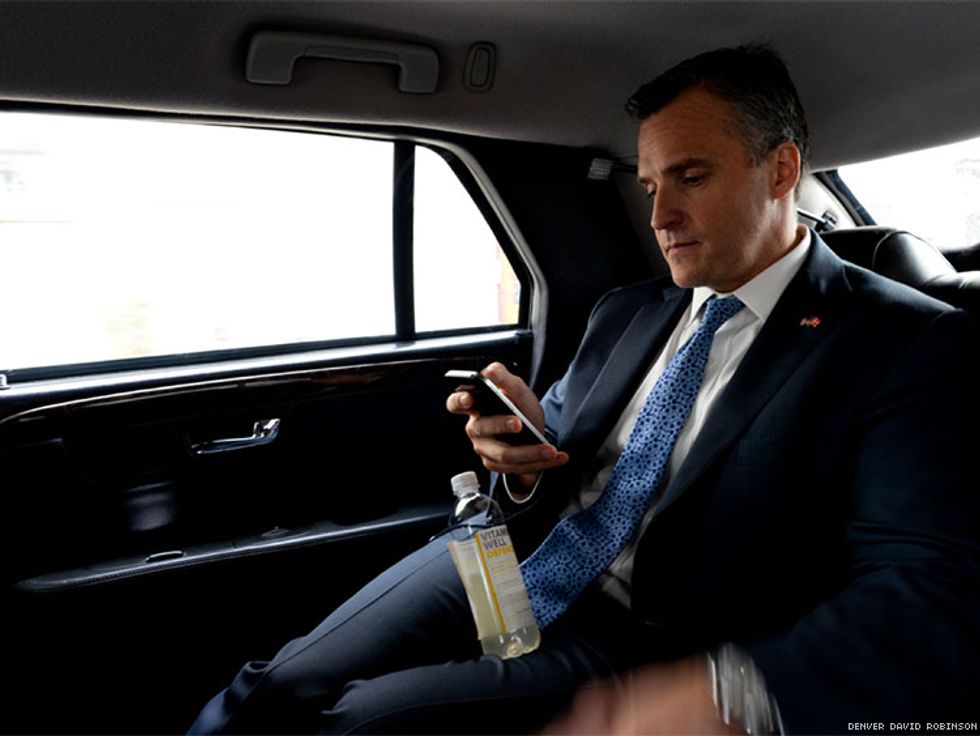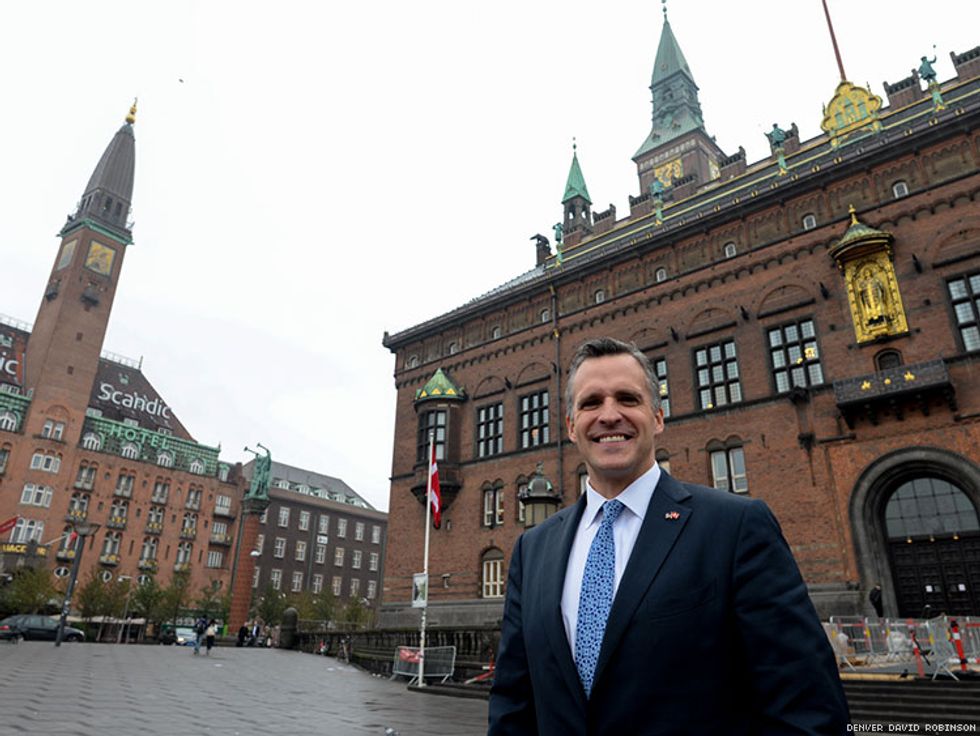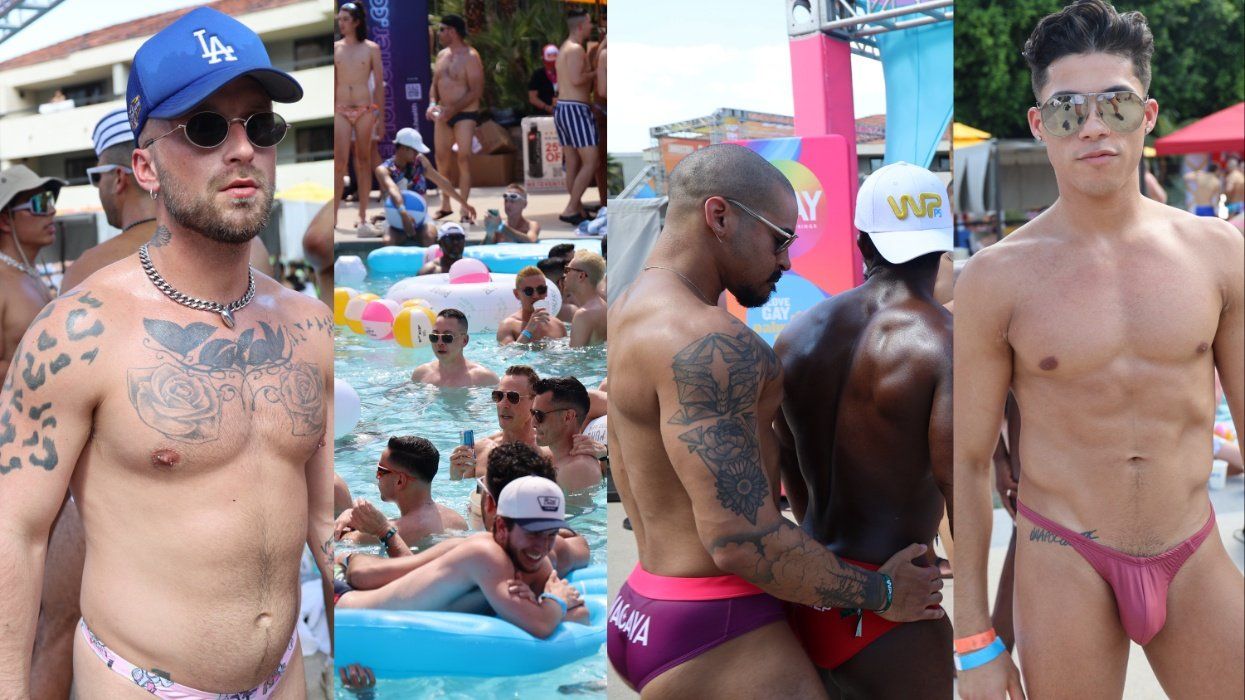If you’ve never heard of Rufus Gifford, you’re probably not in Denmark.
Gifford is the 41-year-old American ambassador to the Kingdom of Denmark, and he’s hugely popular in the small Nordic country of 5.6 million people — for good reason. While Gifford’s hard work and experience led President Obama to appoint him to the role in 2013, most Danes know him through his prime-time TV documentary series, Jeg er Ambassadøren fra Amerika (I Am the Ambassador From America). The show has been a national hit since it began in 2014, and in July earned Gifford the Danish equivalent of an Emmy Award.
In truth, Gifford has become something of a national celebrity. His eloquence, ever-present smile, straightforward manner, and striking good looks have many Danes talking and tweeting about the ambassador. When he is spotted on the streets of Copenhagen or in small towns across the country, people often shout out, “Rufus!” Wholly dispensing with the honorific of his office, citizens often ask Gifford to pose for a selfie. The TV show has allowed many Danes to feel that they’ve gotten to know the ambassador — and through him, that they’ve come to know the U.S. That’s exactly how Gifford wants it.
“Ultimately, I think that there’s too big a gap between people in power and [the population they serve],” Gifford says, which recently met with the ambassador as he went about a day of work in Copenhagen. “You see this in countries around the world, and we have to do a better job at communicating with people in an honest, human way. If people have a better understanding of each other, we can have more productive societies. That’s why I’ve chosen to be as open as I have been.”
But his openness about his day-to-day life, including his recent marriage to longtime partner Dr. Stephen DeVincent in Copenhagen’s stately City Hall, carries with it a certain amount of risk, especially for an international diplomat. Gifford has endured criticism in the Danish press that he isn’t being serious enough, and indeed, the TV series can at times border on reality-show salaciousness, taking viewers into deeply personal territory and vulnerable situations. In one scene, cameras catch the ambassador in his Calvin Kleins as he changes into a SWAT uniform. Despite the critiques, Gifford clearly takes his role in Denmark seriously, working tirelessly to further his and the State Department’s goal to strengthen the long-standing, already-positive relationship between the U.S. and Denmark.
Gifford is one of six LGBT individuals serving the United States as ambassadors in embassies around the globe. He’s been consistently open about being gay, and often refers to his personal story of coming out in a time when doing so effectively ruled out roles in political leadership.
“Like for so many of us, the idea that this would have happened for me is such a dream; it’s just not real,” says the ambassador, sitting in the official Embassy residence he shares with his husband north of Copenhagen. “I wish my 15-year-old self could have seen what my life is now, because that was a time when I had almost no hope.”
Back then, Gifford continues, “You just didn’t believe that these were options for [LGBT people]. You realize that the possibilities you may not have thought were there 10 years ago are there now. Of course, working your butt off [is a big part of it].”
Gifford is keenly aware that along with success and the profile of his office comes the responsibility to be active, to be public.
“I get challenged on that here,” he says. “People ask, ‘Why are you so public? Why do you talk about this so much?’ But it matters. It matters because you see the notes from 20-year-old LGBT people—and 70-year-olds—saying, ‘Thank you!’ Those are the people I wish had been talking to me when I was younger.”
Admittedly, Gifford’s position as an openly gay U.S. ambassador is not, on its own, headline-grabbing material in a hyper-progressive, gay-friendly Scandinavian nation that has long had a friendly relationship with the U.S. But advancing President Obama’s mandate to promote global and human rights requires more than mere acceptance, Gifford contends.
[RELATED: 37 Pictures of the World's Coolest Ambassador]
“The role here is ultimately about visibility,” explains the ambassador. “It involves talking about [LGBT] issues in a way that is meaningful — and I don’t mean just announcing the fact that I’m gay, although that is part of it. It’s being out and talking about [being gay] in a way that isn’t provocative. Sometimes it’s as simple as saying Stephen’s name in a sentence and having that not be provocative — the fact that I’m saying a man’s name as my husband.”
In early October, Gifford and DeVincent married in the Københavns Rådhus (Copenhagen City Hall), where the world’s first legal same-sex unions were performed in 1989. While their marriage in Copenhagen City Hall was a “tipping of the hat” to the groundbreaking legal rights granted to same-sex couples for the first time 26 years ago almost to the day, the driving factor in choosing to wed in Denmark was simply the men’s life together.
“It just made sense when we put it all together,” says Gifford. The celebrated event was highly visible and attracted the attention of viewers and bloggers from around the world via social media, much of it thanks to Gifford’s own Instagram postings and Twitter hashtags throughout the day. More recently, poignant scenes from the ceremony were aired on the concluding chapter of Jeg er Ambassadøren fra Amerika.
“We represent the USA in Denmark, but we’re also just a couple,” adds DeVincent, a veterinary doctor who splits his time between two international wildlife agencies based in Denmark and overseeing the running of Rydhave, the 1885 mansion north of Copenhagen that functions as the official residence to the U.S. ambassador. “For us, [this is simply] our life. In 20 years, it’s just going to be the way it is.”
Given their high profile, DeVincent says he appreciates that he and Gifford are asked about their relationship, because “gay youth or a grandmother or parent somewhere” can see them together and hear their responses. “We may just be here, but it’s to everyone’s advantage that we’re trying to share with folks our life together.’”
The men are also aware of the uniquely privileged moment in history and place in the world that they occupy.
“In a country like Denmark it’s easy to forget that these issues are still a big deal in several parts of the world — and in parts of the world that are not very far away from where we are right now,” says Gifford. Parts of the world like Eastern Europe and Russia.
But that only strengthens his resolve, says Gifford:
“Eastern Europe has enormous challenges, and the rise of the far right is very real [across] Europe. When you rest on your laurels and think that the journey is over, that you don’t have to fight anymore, that’s when you start losing again.
“So part of the role is that — reminding people that in a global world, you cannot just be responsible to only one country, you cannot just stop. I like to live in a world where we look beyond just our own borders.”
In August, Gifford and DeVincent led the annual Pride Parade for the U.S. Embassy, the only embassy in Copenhagen to host such an event. British Ambassador Vivien Life marched with them.
It’s a celebration that marks a striking shift in terms of the American position on the global scale of LGBT equality, Gifford notes. Suddenly “the Americans are leading the way on this,” he opines. “Five or 10 years ago, there would have been questioning of the U.S. on this issue — no longer. The U.S. has a terrible brand on certain issues, but, at this point [and on this issue], it’s a little unfair. Look at how far we’ve come.”
The Ambassador isn’t the only one to notice the rapid evolution in American support for equality. Gifford recounts a story of running into a Frenchman who lives in Copenhagen:
“The man had been at the parade and he said to me something like, ‘Who would have thought that the United States of America was going to be the only country marching in the Copenhagen Gay Pride Parade? I was so proud, and I’m not even an American; I’m French. And the French have been on the leading edge of human rights, but we weren’t there.’ And it was just really wonderful to hear.”
It’s not the first time the ambassador has been proud of America’s progressive stand on LGBT issues while living and working in Denmark. In June, when the U.S. Supreme Court ruled that the Constitution required legal marriage equality in all 50 states, Ambassador Gifford learned of the news on a TV monitor glimpsed as he was leaving a meeting.
“It was just one of those things when you immediately get goose bumps; you get choked up,” Gifford says. “I called Stephen and said, ‘They did it!’ And he knew exactly what I was talking about.” He says that he was emotional at first, but then experienced a deep sense of pride later that night when he realized that he was going to bed in an official American residence, beneath the American flag on such a pivotal day for the country.
“The interesting thing is that we used to be so far behind this part of the world [on same-sex marriage],” Gifford says. “This is where you can be really proud that we’ve made significant strides. When you think back 10 years to when Howard Dean was running for president and he was in favor of civil unions, and that was so risky. And now — it’s remarkable. This is true social progress. This is where you can give credit to the movement, because they did such a good job in humanizing the issue, in making it real for people, making it real for families. And it wasn’t just an activist issue. It was broader than that.”
As U.S. ambassador to Denmark, Gifford's role includes serving the Arctic-region country of Greenland, prompting the ambassador to maintain an intimate knowledge of the broad, intersectional perspective his office demands. Regardless of the topic, Gifford moves through conversations with ease and intelligence, effectively addressing the cultural and economic divisions that distinguish the varied people he meets, often working seven days a week and well into many evenings.
His time in Denmark has also helped the ambassador appreciate aspects of the nation’s infastructure that he believes the U.S. would do well to adopt. While some of Denmark’s hallmark policies like universal health care, state-funded higher education, and strict gun laws would require a massive overhaul of long-embedded American institutions, Gifford points to more immediate opportunities for investment in sustainable energy and public infrastructure.
Denmark is one of the world’s leaders in green and wind energy, supplying on a good day (that is, a windy day,) about 60 percent of the country’s electrical power needs with wind energy and other sustainable sources. The nation’s average sustainable energy output meets about a third of the country’s electrical needs. In contrast, U.S. energy needs are met almost exclusively by the use of fossil fuels, with an estimated 5 to 6 percent coming from sustainable sources.
“So when I look at real compatibility between the United States and Denmark, I look at green energy and offshore wind,” says Gifford. “[I’m] looking for creative solutions to what I think is one of the world’s greatest problems: how to create enough clean energy for the world’s population in a responsible way.” The benefits are not just clean energy, Gifford says, but a real growth opportunity for business. “If you create offshore wind industries in the U.S., it creates jobs there.”
Gifford also points to the ubiquity of bikes and bike lanes in Copenhagen. “Copenhagen is built on bikes,” he says. “A couple of months ago we hosted delegations from Los Angeles and Seattle that came to study the city’s bike lanes, just to see how their cities might be able to get more cars off the streets.”
While Gifford knows that L.A. will never be Copenhagen, his own experience advocating for novel strategies within the American political machine makes him optimistic that some of the progress he’s seen in Denmark can be emulated in the U.S.
Gifford began his long service stateside in 2004, at age 29, as an unpaid intern for John Kerry’s presidential campaign. That early involvement eventually led to Gifford being named finance director for the Democratic National Committee in 2009, and he ultimately raised more than $1.2 billion for President Obama’s reelection campaign in 2012.
From this past experience and his current vantage point as the sitting ambassador in Denmark, Gifford knows that governments need to evolve to meet the conditions of a world connected through mobile phone apps and social media. “This means [changing] communication, the way we interact with people,” Gifford says. “That’s what we’re trying to do. And governments are always the last to come around.”
But officials at the U.S. Department of State are working to disprove that generalization, as several embassy staffers say that Ambassador Gifford—or Ambo, as he’s fondly abbreviated—has been held up as an example to be emulated by senior members of the State Department, including now-Secretary of State John Kerry.
Alistair Thomson, a 19-year veteran of the U.S. Embassy in Copenhagen, has seen several ambassadors come and go over the years, each bringing their own style and method in connecting with the Danes. But “there’s just something special about Rufus Gifford,” says Thomson. “He’s one of our bests.”
Noting that everyone at the embassy has seen his TV documentary series, Gifford says that he’s just “following Obama’s lead on this stuff,” pointing to the president’s February video on BuzzFeed promoting the latest health care sign-up deadline. “That was a fantastic, huge success,” Gifford smiles, acknowledging that the viral pitch did prompt some criticism from Republicans. “But [Obama’s team on that video] had a much bigger budget than we do.”
Originally run on Advocate.com





